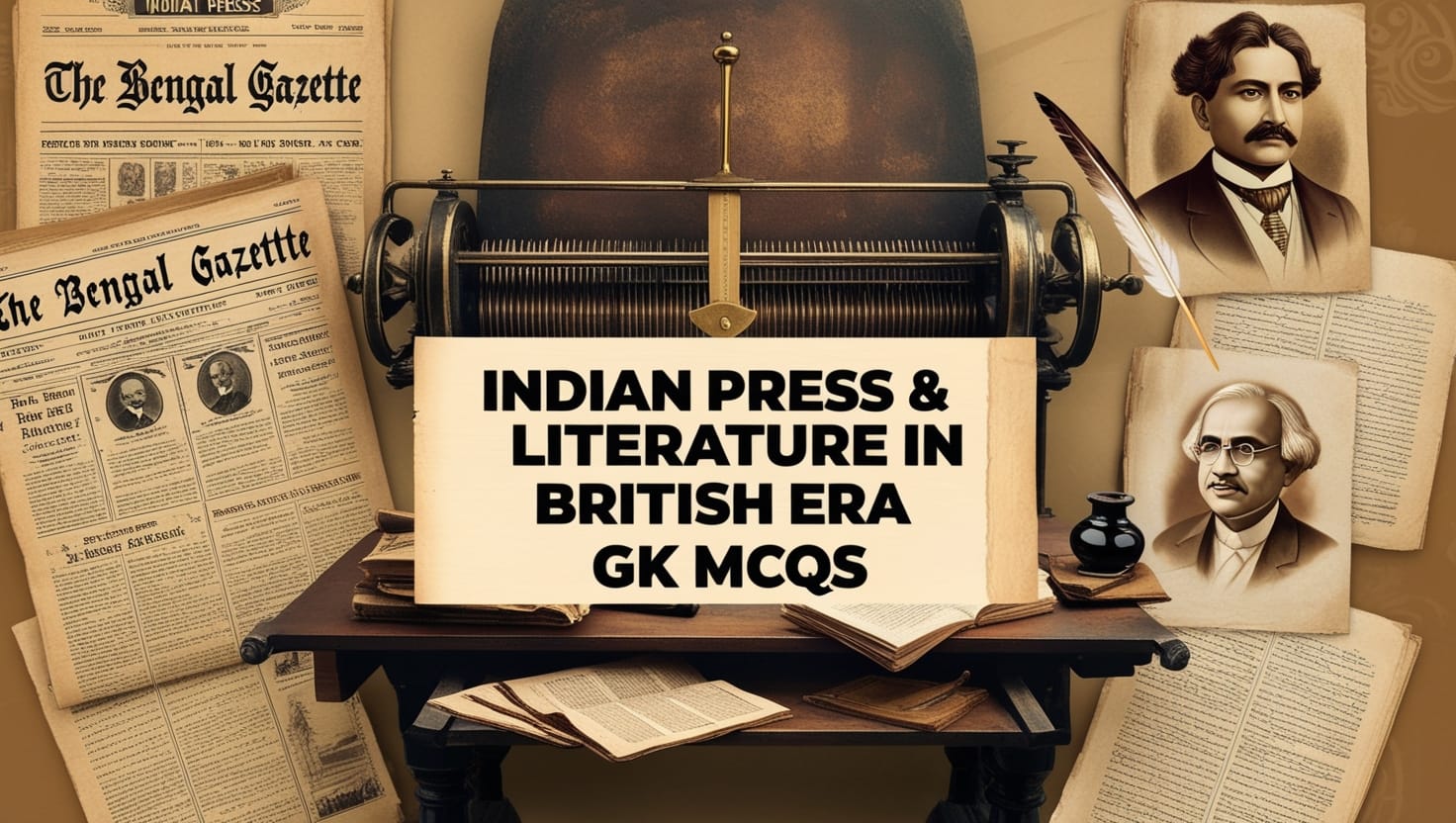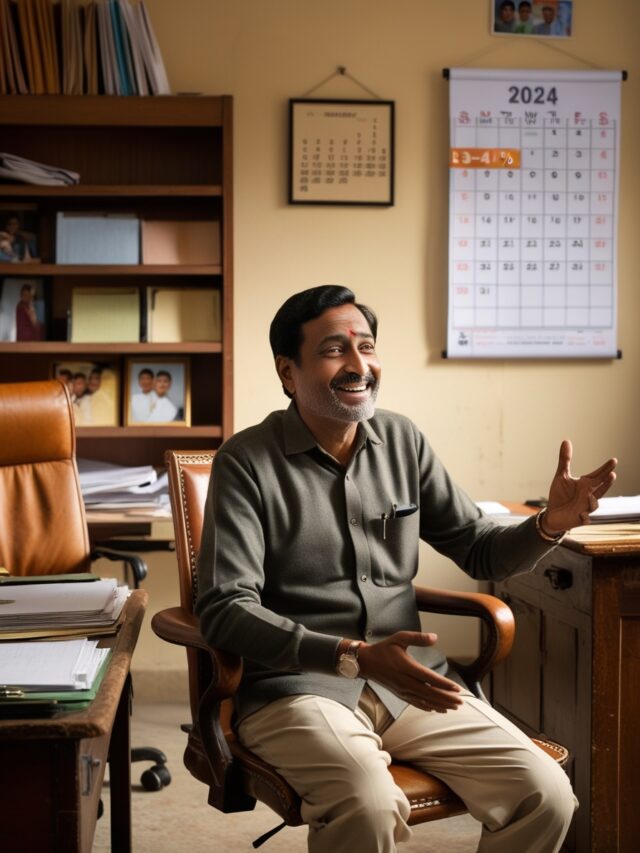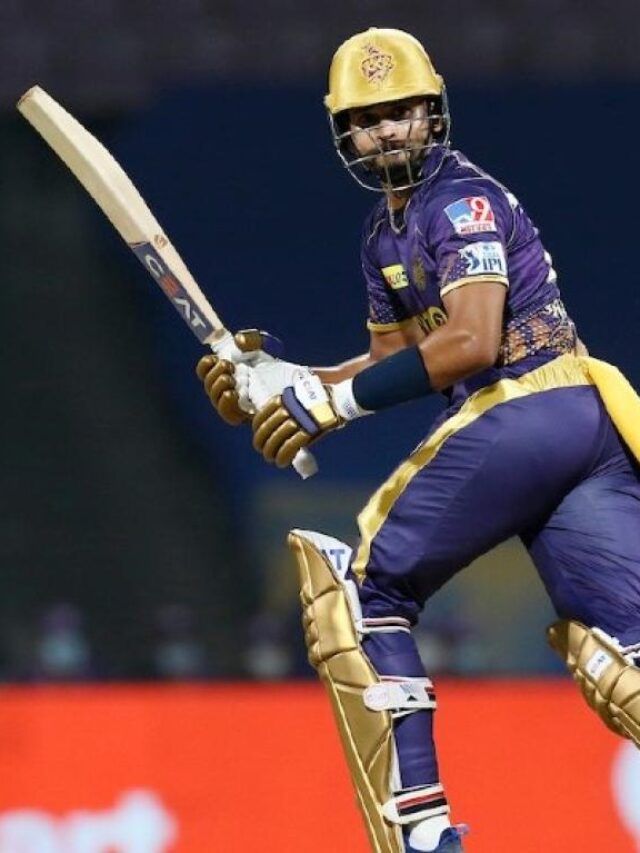
1. Who was known as the “Liberator of India Press”?
A) Lord William Bentinck
B) Sir Charles Metcalfe
C) Lord Auckland
D) Lord Ellenborough
Show Answer
Answer: B) Sir Charles Metcalfe
Sir Charles Metcalfe, who served as the Governor-General of India from 1835 to 1836, is known as the “Liberator of India Press” for his significant role in granting full liberty to the press during his short tenure. He believed in the freedom of the press as a means to promote open discussion, foster public opinion, and ensure greater transparency in government. Metcalfe’s policies were a departure from the earlier attempts to control the press in India.
2. Which Viceroy passed the Vernacular Press Act and the Arms Act of 1878?
A) Lord Lytton
B) Lord Mayo
C) Lord Dalhousie
D) Lord Hardinge
Show Answer
Answer: A) Lord Lytton
Lord Lytton served as the Viceroy of India from 1876 to 1880. During his tenure, he passed two significant acts, the Vernacular Press Act and the Arms Act of 1878. The Vernacular Press Act aimed at regulating the vernacular press in India, giving the government the power to confiscate the printing machinery of newspapers that published content deemed seditious or offensive. The Arms Act was introduced to regulate the possession of arms in India.
3. The name of Barindra Ghosh is associated with which among the following newspapers?
A) Indian Opinion
B) Jugantar
C) Ghadar
D) Maharatta
Show Answer
Answer: B) Jugantar
Barindra Ghosh was indeed associated with the Bengali revolutionary newspaper “Jugantar,” which he co-founded in 1906. Jugantar played a crucial role in the Indian independence movement, advocating for armed resistance against British rule.
4. Who among the following edited and published the newspaper Indian Mirror in 1861?
A) Amitava Ghosh
B) Rabindranath Tagore
C) Sumit Ganguly
D) Manmohan Ghosh and Devendranath Tagore
Show Answer
Answer: D) Manmohan Ghosh and Devendranath Tagore
Manmohan Ghosh and Devendranath Tagore did edit and publish the newspaper “Indian Mirror” in 1861 from Calcutta (now Kolkata). The newspaper was known for its strong advocacy of Indian social and political issues.
5. Who among the following introduced the Vernacular Press Act?
A) Sir Ashley Eden
B) Alexander John Arbuthnot
C) Lord Lytton
D) Lord Stanley
Show Answer
Answer: C) Lord Lytton
Lord Lytton introduced the Vernacular Press Act of 1878 to regulate vernacular newspapers in India. This act faced considerable opposition and criticism for its potential to stifle the freedom of the press, and it was eventually repealed.
6. Who among the following founded the Indian Society of Oriental Art to revive the ancient art traditions of India?
A) Abanindranath Tagore
B) Ravindranath Tagore
C) Surendranath Ganguly
D) Mukul Dey
Show Answer
Answer: A) Abanindranath Tagore
Abanindranath Tagore, a prominent artist and nephew of Rabindranath Tagore, founded the Indian Society of Oriental Art in Kolkata to promote and revive India’s ancient art traditions, emphasizing indigenous artistic styles over Western influences.
7. Basumati, the oldest Bengali Daily paper was edited by:
A) Anand Mohan Bose
B) Surya Sen
C) Barinder Kumar Ghosh
D) V. D. Savarkar
Show Answer
Answer: C) Barinder Kumar Ghosh
Barinder Kumar Ghosh was not the editor of the oldest Bengali daily newspaper, “Basumati.” “Basumati” was indeed one of the oldest Bengali newspapers, but its notable editor was Girish Chunder Ghosh.
8. Who among the following were the first to establish “Printing Press” in India?
A) British
B) Portuguese
C) Dutch
D) French
Show Answer
Answer: B) Portuguese
The first printing press in India was not established by the Portuguese in Goa. Instead, it was introduced by the British at Serampore (near Calcutta) in 1800 when they founded the Serampore Mission Press.
9. Who of the following wrote the first Indian poetic work in English?
A) Kashi Prasad Ghosh
B) Ramchandra Vidyavagish
C) Krishna Mohan Banerjee
D) Hariharanand
Show Answer
Answer: A) Kashi Prasad Ghosh
Kashi Prasad Ghosh was a significant figure in the literary world and was among the early poets who wrote in English during the British Raj. However, the claim that he wrote the “first Indian poetic work in English” is debatable, as others had also contributed to English poetry in India.
10. Who among the following has written “Bidrohi,” one of the most famous Bengali poems?
A) Rabindranath Tagore
B) Bankim Chandra Chattopadhhyaya
C) Kazi Nazrul Islam
D) Sambhunath Pandit
Show Answer
Answer: C) Kazi Nazrul Islam
“Bidrohi” is indeed one of the most famous Bengali poems written by Kazi Nazrul Islam in December 1921. It is known for its revolutionary and patriotic themes.
Q11: Who among the following is related to the Repeal of Vernacular Press Act of 1878?
1. A) Lord Rippon
2. B) Lord Lytton
3. C) Lord Curzon
4. D) Lord Irwin
Show Answer
Answer: 1
Explanation: The Vernacular Press Act of 1878 was not repealed during Lord Ripon’s time. It was repealed in 1882 during the tenure of Lord Ripon’s successor, Lord Dufferin.
Q12: William Digby is known to write on which of the aspects of India?
1. A) Indian education
2. B) Indian society
3. C) Famines in India
4. D) Poverty in India
Show Answer
Answer: 3
Explanation: William Digby was an English author who wrote about famines in India during the British Raj. He criticized British policies for exacerbating these famines in his works, shedding light on the devastating consequences of these policies.
Q13: Which among the following was the first Bengali Newspaper?
1. A) Samachar Darpan
2. B) Samvad Kaumudi
3. C) Samvad Prabhakar
4. D) Bengal Gazette
Show Answer
Answer: 1
Explanation: The first Bengali newspaper was Samachar Darpan, published on 23 May 1818 by the Baptist Missionary Society. It played a significant role in the development of Indian journalism and the spread of knowledge during the early 19th century.
Q14: James Augustus Hickey is also known as?
1. A) Father of Indian media
2. B) Father of Indian Press
3. C) Father of Indian Television
4. D) Pioneer of Photography in India
Show Answer
Answer: 2
Explanation: James Augustus Hickey is known as the Father of Indian Press for starting the first Indian newspaper, the Calcutta General Advertise or the Bengal Gazette, in January 1780.
Q15: Who among the following started the newspaper Sambad Kaumudi?
1. A) Raja Rammohan Roy
2. B) Dayanand Saraswati
3. C) Ishwar Chandra Vidyasagar
4. D) Ganga Kishore Bhattacharya
Show Answer
Answer: 4
Explanation: Raja Rammohan Roy started the Bengali newspaper Sambad Kaumudi in 1831.
Q16: Which among the following organizations published the journal called The Indian Sociologist?
1. A) India House
2. B) Ghadar Party
3. C) British Indian Association
4. D) Berlin Committee
Show Answer
Answer: 1
Explanation: The Indian Sociologist was a publication by India House, which served as a platform for promoting nationalist views and supporting Indian students in Britain during the late 19th and early 20th centuries. It played a significant role in fostering a sense of Indian identity and advocating for India’s independence.
Q17: What was the name of the first newspaper to announce the partition of Bengal on July 6th, 1905?
1. A) Swaraj
2. B) Sanjivani
3. C) Kalantar
4. D) Anandabazar Patrika
Show Answer
Answer: 3
Explanation: Kalantar was indeed the first newspaper to announce the partition of Bengal on July 6, 1905. The partition of Bengal had far-reaching social and political implications, leading to widespread protests and opposition.
Q18: ‘New India’ and ‘Commonweal’ newspapers were started by whom?
1. A) Madan Mohan Malviya
2. B) S. Subramaniyam Iyer
3. C) Annie Besant
4. D) Lala Lajpat Rai
Show Answer
Answer: 3
Explanation: Annie Besant, a prominent figure in the Indian freedom movement, was indeed responsible for starting and editing newspapers like New India and Commonweal. These publications were instrumental in spreading nationalist ideas and advocating for India’s independence.
Q19: Who was the editor of the newspaper Sambad Kaumudi?
1. A) Raja Ram Mohan Roy
2. B) Bhabani Charan
3. C) Lala Jagat Narayan
4. D) Fardunjee Marzban
Show Answer
Answer: 2
Explanation: Bhabani Charan was the editor of the newspaper Sambad Kaumudi, recognized as the first exclusively Hindi-language newspaper published in India. This contributed to the promotion and development of the Hindi language in Indian journalism.
Q20: Who published the newspaper Bombay Samachar in 1822?
1. A) Lala Jagat Narayan
2. B) Raja Ram Mohan Roy
3. C) Fardunjee Marzban
4. D) James Augustus Hickey
Show Answer
Answer: 3
Explanation: The Bombay Samachar is the oldest continuously published newspaper in India, having been founded in 1822 by Fardunjee Marzban. It holds a significant place in the history of Indian journalism.
Q21: Who published the first exclusively Hindi language newspaper Udant Martand?
1. A) Jugal Kishore Shukla
2. B) Lala Jagat Narayan
3. C) Raja Ram Mohan Roy
4. D) Fardunjee Marzban
Show Answer
Answer: 1
Explanation: Pt. Jugal Kishore Shukla did publish the first exclusively Hindi language newspaper, Udant Martand, on May 30, 1826, from Calcutta, contributing to the growth of Hindi journalism.
Q22: A notable newspaper Sambad Prabhakar was published by whom?
1. A) Jugal Kishore Shukla
2. B) Ishwar Chandra Gupta
3. C) Lala Jagat Narayan
4. D) Fardunjee Marzban
Show Answer
Answer: 2
Explanation: Ishwar Chandra Gupta was indeed the publisher of the notable Bengali newspaper Sambad Prabhakar in 1831, playing a crucial role in the development of Bengali journalism.
Q23: A notable newspaper Jam-e Jamshed was published by whom?
1. A) P.M. Motiwala
2. B) Ishwar Chandra Gupta
3. C) Lala Jagat Narayan
4. D) Fardunjee Marzban
Show Answer
Answer: 1
Explanation: Jam-e Jamshed was a notable weekly newspaper published in Gujarati with a section in English by P.M. Motiwala in Bombay. It catered to the Gujarati-speaking community and had a broader readership through its English section.
Q24: Who was the editor of the newspaper Rast Goftar?
1. A) Dayanand Saraswati
2. B) Ishwar Chandra Vidyasagar
3. C) Iswar Chanda Gupta
4. D) Dadabhai Naoroji
Show Answer
Answer: 4
Explanation: Dadabhai Naoroji edited the newspaper Rast Goftar (The Truth Teller) in England, using it to clarify Zoroastrian concepts and engage in intellectual discourse.
Q25: Who among the following started the newspaper Shome Prakash?
1. A) Dayanand Saraswati
2. B) Ishwar Chandra Vidyasagar
3. C) Iswar Chanda Gupta
4. D) Lala Jagat Narayan
Show Answer
Answer: 2
Explanation: Ishwar Chandra Vidyasagar, a key figure of the Bengal Renaissance, started the newspaper Shome Prakash, contributing to the intellectual and social awakening in Bengal during the 19th century.
Q26: Who among the following started the newspaper Amrit Bazar Patrika?
1. A) Ishwar Chandra Vidyasagar
2. B) Dayanand Saraswati
3. C) Shishir Kumar Ghosh
4. D) Lala Jagat Narayan
Show Answer
Answer: 3
Explanation: Amrita Bazar Patrika, a Bengali daily newspaper, was started by Shishir Kumar Ghosh, Moti Lal Ghosh, and Tusar Kanti Ghosh in 1868. It was used to expose British agents’ cruel deeds of tyranny.
Q27: Who was the editor of the newspaper Hindoo Patriot?
1. A) Shishir Kumar Ghosh
2. B) Girish Chandra Ghosh
3. C) Tusar Kanti Ghosh
4. D) Lala Jagat Narayan
Show Answer
Answer: 2
Explanation: Girish Chandra Ghosh was not the editor of the English weekly newspaper Hindoo Patriot in 1853. This publication was known for revealing the oppression of indigo planters in Bengal and played a role in the Indian independence movement.
Q28: Who was the founder of the newspaper The Statesman?
1. A) Robert Knight
2. B) Girish Chandra Ghosh
3. C) Dadabhai Naoroji
4. D) Lala Jagat Narayan
Show Answer
Answer: 1
Explanation: The Statesman is an Indian English-language broadsheet daily newspaper founded by Robert Knight in 1875. It has a long history of reporting on significant events in India and around the world.
Q29: Who founded the newspaper The Tribune in 1881?
1. A) Robert Knight
2. B) Annie Besant
3. C) Lala Jagat Narayan
4. D) Sardar Dyal Singh Majithia
Show Answer
Answer: 4
Explanation: The Tribune is an Indian English-language daily newspaper founded by Sardar Dyal Singh Majithia on February 2, 1881, in Lahore. It has been an important source of news and opinions, particularly in Northern India.
Q30: Who was the editor of the newspaper Kesari?
1. A) Bipin Chandra Paul
2. B) Annie Besant
3. C) Bal Gangadhar Tilak
4. D) Gopal Ganesh Agarkar
Show Answer
Answer: 3
Explanation: Lokmanya Bal Gangadhar Tilak did found the Marathi newspaper Kesari in 1881. He also initiated the English newspaper Maratha to expose the reality of British rule and advance the freedom struggle in India.
Q31: Who among the following started the newspaper Sudharak?
1. A) Bipin Chandra Paul
2. B) Annie Besant
3. C) Bal Gangadhar Tilak
4. D) Gopal Ganesh Agarkar
Show Answer
Answer: 4
Explanation: Gopal Ganesh Agarkar, a prominent social reformer, started the periodical newspaper Sudharak, which aimed to campaign against the injustices of untouchability and the caste system.
Q32: Who among the following started the newspaper Bande Matram?
1. A) Annie Besant
2. B) Gopal Ganesh Agarkar
3. C) Bal Gangadhar Tilak
4. D) Bipin Chandra Pal
Show Answer
Answer: 4
Explanation: Bipin Chandra Pal indeed initiated the English daily Bande Matram in 1906 to promote revolutionary thinking and advocate for India’s freedom from foreign rule.
Q33: Who published the newspaper titled Al-Hilal?
1. A) Mahatma Gandhi
2. B) Jawaharlal Nehru
3. C) MD) Ali Jinnah
4. D) Maulana Abdul Kalam Azad
Show Answer
Answer: 4
Explanation: In 1912, Maulana Abul Kalam Azad started the weekly Urdu language newspaper Al-Hilal to criticize the policies of the British Raj in India.
Q34: Who published the newspaper Bombay Chronicle?
1. A) Motilal Nehru
2. B) S.A) Dange
3. C) OPAON
4. D) Pherozeshah Mehta
Show Answer
Answer: 4
Explanation: The English-language newspaper Bombay Chronicle was published in 1910 by Sir Pherozeshah Mehta, who was a prominent lawyer and a founder of the Indian National Congress. The newspaper provided a platform for discussing social and political issues during the independence movement.
Q35: Who had launched a journal called Free Hindustan from the United States of America during the Freedom Struggle?
1. A) Tarankanath Das
2. B) Akshay Kumar Datta
3. C) Batukeshwar Datta
4. D) Lala Hardayal
Show Answer
Answer: 1
Explanation: In 1905, Taraknath Das launched a journal called Free Hindustan in the United States of America, using it to influence American public opinion about the real condition of India and advocate for its independence.
Q36: Who was the founder-editor of the newspaper Free Press Journal?
1. A) K.M. Pannikar
2. B) Motilal Nehru
3. C) Sardar Jagat Singh
4. D) S. Sadanand
Show Answer
Answer: 4
Explanation: Free Press Journal is indeed an Indian English-language daily newspaper that was established in 1930 by Swaminathan Sadanand to support the Indian independence movement. It is published in Mumbai.
Q37: Who started the newspaper Punjab Kesari?
1. A) Lala Jagat Narayan
2. B) Motilal Nehru
3. C) Sardar Ajit Singh
4. D) Both 1 & 2
Show Answer
Answer: 1
Explanation: Punjab Kesari is a daily Hindi newspaper founded in 1965 by Lala Jagat Narayan, who was the founder of the Hind Samachar group.
Q38: Who published the newspaper Young India?
1. A) M.K. Gandhi
2. B) Lala Jagat Narayan
3. C) S.A. Dange
4. D) K.M. Pannikar
Show Answer
Answer: 1
Explanation: Young India was a significant weekly journal published in English by Mohandas Karamchand Gandhi, popularly known as Mahatma Gandhi. It was published from 1919 to 1932 and played a crucial role in spreading Gandhi’s unique ideology and thoughts regarding the use of nonviolence (Satyagraha) as a powerful tool in organizing movements for India’s independence. In Young India, Gandhi urged readers to consider, organize, and plan for India’s eventual independence from British colonial rule.
Q39: Who was the founder of the newspaper Harijan?
1. A) SC Bose
2. B) M.K. Gandhi
3. C) Motilal Nehru
4. D) Jawahar Lal Nehru
Show Answer
Answer: 2
Explanation: After Young India, Mahatma Gandhi initiated the publication of another important newspaper, Harijan, in English in 1933. This newspaper aimed to give a voice to the voiceless masses from the untouchable castes, addressing their concerns and advocating for social justice and equality.
Q40: Consider the following newspapers/journals with famous personalities associated with them:
1. Navjeevan – M.K. Gandhi
2. Young India – M.K. Gandhi
3. Harijan – M.K. Gandhi
4. Indian Opinion – M.K. Gandhi
Mahatma Gandhi was the editor for which of the above?
1. A) 1, 2 & 3 Only
2. B) 3 & 4 Only
3. C) 2, 3 & 4 Only
4. D) 1, 2, 3 & 4
Show Answer
Answer: 4
Explanation: All the newspapers and journals mentioned, namely Navjeevan, Young India, Harijan, and Indian Opinion, were indeed edited by Mahatma Gandhi. These publications were instrumental in advancing his ideas and principles of nonviolent resistance and civil disobedience during India’s struggle for independence.
Q41: During the Freedom Struggle, who had launched a journal called Free Hindustan from the United States of America?
1. A) Tarankanath Das
2. B) Akshay Kumar Datta
3. C) Batukeshwar Datta
4. D) Lala Hardayal
Show Answer
Answer: 1
Explanation: In 1905, Taraknath Das launched a journal called Free Hindustan in the United States of America. The primary objective of this publication was to advocate for India’s independence and criticize the British colonial policies. It aimed to influence American public opinion regarding the real conditions in India and support the cause of Indian independence.
Q42: Consider the following newspapers/journals with famous personalities associated with them:
1. Young India – M.K. Gandhi
2. Indian Opinion – M.K. Gandhi
3. The Hitavada – Gopal Krishna Gokhale
Which of the above is/are correct?
1. A) 1 & 3 Only
2. B) 3 Only
3. C) 2 & 3 Only
4. D) 1, 2 & 3
Show Answer
Answer: 1
Explanation: Young India and Indian Opinion were edited by M.K. Gandhi, and they were essential platforms for promoting his ideals. The Hitavada was not associated with Gopal Krishna Gokhale but was established as part of the freedom struggle by Gopal Krishna Gokhale in 1911. It was an influential publication in the Indian context.
Q43: Consider the following newspapers/journals/magazines with famous personalities associated with them:
1. Navjeevan
2. Young India
3. Harijan
4. Indian Opinion
Mahatma Gandhi was the editor for which of the above?
Choose the right option
1. A) 1, 2 & 3 Only
2. B) 3 & 4 Only
3. C) 2, 3 & 4 Only
4. D) 1, 2, 3 & 4
Show Answer
Answer: 4
Explanation: Mahatma Gandhi was the editor of all the mentioned newspapers/journals – Navjeevan, Young India, Harijan, and Indian Opinion.
Q44: Consider the following statements about the Vernacular Press Act:
1. It was enacted by Lord Lytton.
2. It came to be known as a Gagging Act.
3. The Act was repealed by Lord Ripon.
Which of the above statements is/are correct?
1. A) 1 & 2 Only
2. B) 2 & 3 Only
3. C) 1 Only
4. D) 1, 2 & 3
Show Answer
Answer: 4
Explanation: The Vernacular Press Act was enacted by Lord Lytton in 1878, and it became known as a Gagging Act as it aimed to suppress newspapers critical of the British. It was later repealed by Lord Ripon in 1881.
Q45: Identify the personality with the help of the given information:
1. He started Bombay Chronicle, an English-language weekly newspaper.
2. He was known as The Lion of Bombay.
3. He was one of the founders of the Indian National Congress and its president at the Calcutta session of 1890.
Choose the right option
1. A) Dadabhai Naoroji
2. B) Sir Pherozeshah Mehta
3. C) Mahadev Govind Ranade
4. D) Bal Gangadhar Tilak
Show Answer
Answer: 2
Explanation: Sir Pherozeshah Mehta was a Parsi Indian political leader known as The Lion of Bombay. He started Bombay Chronicle, an English-language weekly newspaper. He was one of the founders of the Indian National Congress and served as its president at the Calcutta session of 1890.
Q46: Consider the following newspapers/journals with famous personalities associated with them:
1. Commonweal – Annie Besant
2. New India – M.K. Gandhi
3. Janata – Dr. Babasaheb Ambedkar
Which of the above is/are correct?
1. A) 1 & 3 Only
2. B) 3 Only
3. C) 2 & 3 Only
4. D) 1, 2 & 3
Show Answer
Answer: 4
Explanation: Annie Besant was associated with Commonweal, M.K. Gandhi was associated with New India, and Dr. Babasaheb Ambedkar was associated with Janata.
Q47: Consider the following statements:
1. The newspaper National Herald was established by Jawaharlal Nehru.
2. Jai Hind was the title of an editorial that announced India’s freedom in this newspaper.
Which of the above statements is/are correct?
1. A) Only 1 is correct
2. B) Only 2 is correct
3. C) Both 1 & 2 are correct
4. D) Neither 1 nor 2 is correct
Show Answer
Answer: 3
Explanation: The newspaper National Herald was indeed established by Jawaharlal Nehru, and it had not been published from August 15, 1942, to November 11, 1945. On its return, Nehru wrote an editorial titled Jai Hind to announce India’s freedom in the newspaper.
Q48: Why is Charles Metcalfe called The Liberator of Press?
1. A) For repealing the licensing regulation act of 1810
2. B) For repealing the press act of 1815
3. C) For repealing the licensing regulation act of 1823
4. D) For repealing the press act of 1830
Show Answer
Answer: 3
Explanation: Charles Metcalfe earned the title The Liberator of Press for his significant role in repealing the licensing regulation act of 1823. The act, introduced by John Adams, aimed to suppress Indian newspapers by imposing compulsory licensing. However, Charles Metcalfe repealed this act in the year 1835, allowing greater freedom and independence to the press.
Q49: When were Gokhale’s Political Testaments published?
1. A) 1910
2. B) 1911
3. C) 1915
4. D) 1917
Show Answer
Answer: 4
Explanation: Gopal Krishna Gokhale, on the request of Lord Willingdon, prepared a scheme of reforms to be implemented in India after the First World War. Although he completed the Political Testaments before his death in 1915, they were published in 1917 (August).
Q50: Bipin Chandra Paul is associated with which among the following Newspapers?
1. A) Paridarsak
2. B) Bengal Public Opinion
3. C) The Tribune
4. All the above
Show Answer
Answer: 4
Explanation: Bipin Chandra Pal was associated with the weekly newspaper Paridarsak. He also served as an assistant editor for Bengal Public Opinion and The Tribune. In 1901, New India was initiated to promote his brand of socialism.
Q51: Who was the editor of the newspaper The Comrade?
1. A) Maulana Abul Kalam Azad
2. B) Sayed Ahmad
3. C) Maula MD. Ali
4. D) M.A) Ansari
Show Answer
Answer: 3
Explanation: The Comrade was a weekly English-language newspaper edited by Maulana Mohammad Ali. However, this newspaper was banned on September 26, 1914.
Q52: Which of the following newspapers was published by Dadabhai Naoroji?
1. A) The Voice of India
2. B) New India
3. C) Young India
4. D) The Economy of India
Show Answer
Answer: 1
Explanation: Dadabhai Naoroji began publishing The Voice of India from Bombay in 1883, making valuable contributions to Indian journalism and the nationalist movement.
Q53: In 1911, Gopal Krishna Gokhale published which of the following newspapers?
1. A) Rast Goftar
2. B) Hitavada
3. C) The Voice of India
4. D) The soul of India
Show Answer
Answer: 2
Explanation: In 1911, Gopal Krishna Gokhale launched the newspaper Hitavada in Nagpur. It served as the journal (English daily) of the Servants of India Society and played a role in addressing societal issues and advocating for reform.
Q54: Which of the following was the first newspaper in India?
1. A) Bengal Gazette
2. B) Samachar Darpan
3. C) The Gazette of India
4. D) Bombay Herald
Show Answer
Answer: 1
Explanation: Hicky’s Bengal Gazette, published in 1780, holds the distinction of being the first newspaper in India. It was an English newspaper published weekly in Kolkata by James Augustus Hicky, who was of Irish origin. However, it was banned in 1782 due to its critical content and challenges to the British colonial authorities.
Q55: Who was the publisher of the newspaper Indian World?
1. A) Simon Archer
2. B) William Duane
3. C) Robert Knight
4. D) Lucy Atkins
Show Answer
Answer: 2
Explanation: In 1794, William Duane published Indian World, a newspaper that likely focused on Indian affairs or matters concerning India. However, this publication attracted the attention of Lord Cornwallis, who ordered Duane’s arrest. Consequently, Duane was deported to Europe. This incident reflects the British colonial authorities’ efforts to suppress critical voices and publications.
Q56: During the time of which Viceroy was the Censorship of Press Act, 1799 introduced?
1. A) Lord Lytton
2. B) Lord Mayo
3. C) Lord Wellesley
4. D) Lord Ripon
Show Answer
Answer: 3
Explanation: The Censorship of Press Act of 1799 was introduced by Lord Wellesley. This act was enacted in anticipation of a possible French invasion of India. It allowed the British authorities to exercise control over the press to prevent the dissemination of information that could aid the French or pose a threat to British rule.
Q57: By whom was the Licensing Regulations Act of 1823 enacted?
1. A) John Adams
2. B) Lord Macaulay
3. C) Lord Strachey
4. D) None of the above
Show Answer
Answer: 1
Explanation: The Licensing Regulations Act of 1823 was indeed enacted by John Adams, and its primary aim was to suppress Indian newspapers in native languages. This act declared the press without a license as a penal offense, effectively curbing the freedom of the press during the British colonial era.
Q58: Which among the following acts was known as The Gagging Act?
1. A) Vernacular Press Act 1878
2. B) Licensing Regulations Act of 1823
3. C) Censorship of Press Act of 1799
4. D) Press Act 1835
Show Answer
Answer: 1
Explanation: The Vernacular Press Act of 1878, often referred to as The Gagging Act, was enacted during the tenure of Lord Lytton. This act allowed the British government to monitor and censor vernacular newspapers in India. If a newspaper was deemed seditious or critical of British policies, it could be issued warnings or even face suspension.
Q59: Which among the following acts was introduced during the time of the Great Revolt of 1857?
1. Government of India Act 1858
2. B) Act XXV
3. C) The Press and Books Registration Act 1867
4. D) The Vernacular Press Act
Show Answer
Answer: 1
Explanation: Government of India Act 1858 was introduced during the time of the Great Revolt of 1857. Its main objective was to control the setting up of print presses and to limit, in specific cases, the flow of printed books and papers. These limitations were temporary and were withdrawn right after the Mutiny.
Q60: Which among the following about the Vernacular Press Act is/are correct?
1. It was enacted in the year 1878.
2. It was inspired by the Irish press act.
3. Regular monitoring of newspapers was done by the Governments.
4. When a newspaper was declared as seditious, it was warned.
Choose the right code
1. A) 1 and 2
2. B) 2 and 3
3. C) 1 and 3
4. D) 1, 2, 3 and 4
Show Answer
Answer: 4
Explanation: The Vernacular Press Act of 1878, also known as The Gagging Act, was enacted during the time of Lord Lytton. It was indeed inspired by the Irish press act, and the governments regularly monitored newspapers. If a newspaper was declared as seditious, it was warned.
Q61: When was the Newspapers (Incitement to Offences) Act passed?
1. A) 1901
2. B) 1906
3. C) 1908
4. D) 1913
Show Answer
Answer: 3
Explanation: The Newspapers (Incitement to Offences) Act was passed in June 1908. This act empowered District Magistrates to confiscate presses where violence and seditious activities were involveD)
Q62: Which among the following newspapers stopped publishing after the introduction of the Newspapers (Incitement to Offences) Act of 1908?
1. Yugantar
2. Sandhya
3. Bandematram
Choose the right code:
1. A) Only 1
2. B) 1 and 2
3. C) 2 and 3
4. D) All 1, 2, and 3
Show Answer
Answer: 4
Explanation: After the introduction of the Newspapers (Incitement to Offences) Act of 1908, Sandhya (Brahmabandhab Upadhyay), Yugantar, and Bandematram stopped publishing.
Q63: Which among the following about the Indian Press Act, 1910, is/are true?
1. Magistrates were empowered to ask for a deposit between Rs 500 and 2000 from news printing presses.
2. Local Government was empowered to ask for a deposit between Rs 500 and 5000 from news printing presses.
3. It was repealed by Lord Reading.
Choose the right option:
1. A) Only 1
2. B) 1 and 2
3. C) 2 and 3
4. D) None of the above
Show Answer
Answer: 1
Explanation: As per the Indian Press Act 1910, magistrates were empowered to ask for a deposit between Rs 500 and 2000 from news printing presses. However, Local Government was not empowered to ask for a deposit between Rs 500 and 5000. Also, it was not repealed by Lord Reading.
Q64: When was the Foreign Relations Act enacted?
1. A) 1929
2. B) 1932
3. C) 1935
4. D) 1941
Show Answer
Answer: 2
Explanation: The Foreign Relations Act was enacted in 1932. The main objective of this act was to penalize publications of newspapers that may create a threat to the relationship between His Majesty’s Government and friendly foreign states.
Q65: For how many years did the Defence of India Act control the Indian press?
1. A) 2
2. B) 3
3. C) 4
4. D) 6
Show Answer
Answer: 4
Explanation: The Defence of India Act, enacted during World War II, controlled the Indian press for six years, allowing the British colonial authorities to closely monitor and restrict press activities. However, it was repealed after the conclusion of World War II.
Q66: When was the Press Trust of India Ltd established?
1. A) 1947
2. B) 1950
3. C) 1951
4. D) 1955
Show Answer
Answer: 1
Explanation: The Press Trust of India Ltd was established in 1947 and officially started functioning in 1949. It plays a crucial role in providing news services and coverage in India.
Q67: Which Article of the Indian Constitution contains Freedom of speech and expression?
1. A) Article 19
2. B) Article 21
3. C) Article 22
4. D) Article 51
Show Answer
Answer: 1
Explanation: Article 19 of the Indian Constitution contains the provision for freedom of speech and expression. However, the first amendment act of 1951 introduced limitations on this freedom, allowing it to be curtailed for reasons related to the security of the State and other specified grounds.
Q68: Which among the following about the first press commission of India are correct?
1. It was formed in 1952
2. It was consisting of 11 members
3. G. S. Rajadhyaksha was the chairman of the commission
1. It submitted its report in 1954
Choose the right option:
1. A) 1 & 4
2. B) 1, 2 & 3
3. C) 2, 3 & 4
4. D) 1, 2, 3 & 4
Show Answer
Answer: 2
Explanation: The first press commission of India was formed on September 23, 1952, with G. S. Rajadhyaksha as its chairman. This commission consisted of 11 members and submitted its report in 1954. The press commission was tasked with examining various aspects of the press in India and making recommendations for its development.
Q69: Which among the following newspapers first called the Boycott of foreign goods during the time of Swadeshi movement?
1. A) Sanjibani
2. B) Samachar Darpan
3. C) Bengal Gazette
4. D) Bombay Times
Show Answer
Explanation: Krishna Kumar Mitra launched the journal Sanjibani in 1883. Through his journal, Mitra actively participated in the Swadeshi movement and was among the early advocates of boycotting foreign goods, a key strategy in India’s struggle for independence.
Q70: Which among the following was the former name of the newspaper Times of India?
1. A) Indian Times, Indian Mail
2. B) Hindu Patriot
3. C) Young India
4. D) Bombay Times
Show Answer
Answer: 4
Explanation: The Times of India was initially named the Bombay Times but was later renamed The Times of India in 1861. This newspaper has since become one of the most prominent English-language newspapers in India.
Q71: Who among the following was the editor of the journal The Indian Sociologist?
1. A) Shyamji Krishnavarma
2. B) Dadabhai Naoroji
3. C) Abul Kalam Azad
4. D) MD) Ali Jinnah
Show Answer
Answer: 1
Explanation: Shyamji Krishnavarma was the editor of the journal The Indian Sociologist in London. He also founded India House, an organization that promoted nationalist views among Indian students in Britain and contributed to India’s struggle for independence.
Q72: Which of the following was the editor of the first all-Hindi newspaper ‘Udanta Martanda’ which was published from Calcutta in the year 1826?
1. A) Pandit Jugal Kishore Shukla
2. B) Pandit Sadal Mishra
3. C) Bhartendu Harishchandra
4. D) Mahavir Prasad Dwivedi
Show Answer
Answer: 1
Explanation: Pandit Jugal Kishore Shukla served as the editor of the first all-Hindi newspaper, Udanta Martanda, which was published in its entirety in the Hindi language using the Devanagari script. This significant development took place in Calcutta in 1826.
Q73: What was the name of the first Vernacular newspaper of India?
1. A) Samachar Sandhaya
2. B) Samachar Bhumi
3. C) Samachar Darpan
4. D) Pratham Samachar
Show Answer
Answer: 3
Explanation: Samachar Darpan holds the distinction of being the first vernacular newspaper of India. It was published on May 31, 1818, by Carey and Marshman from Serampore during the time of Lord Hastings. This marked a significant step in Indian journalism.
Q74: Which of the following newspapers advocated revolutionary terrorism during the period of Indian freedom struggle?
1. Sandhya
2. Yugantar
3. Kaal
Choose the right option:
1. A) Only 1 & 2
2. B) Only 2 & 3
3. C) Only 1 & 3
4. D) 1, 2 & 3
Show Answer
Answer: 4
Explanation: The newspapers Sandhya, Yugantar, and Kaal were notable for advocating revolutionary terrorism during the period of the Indian freedom struggle. They played a role in promoting radical ideas and activities as part of the larger movement for India’s independence.







